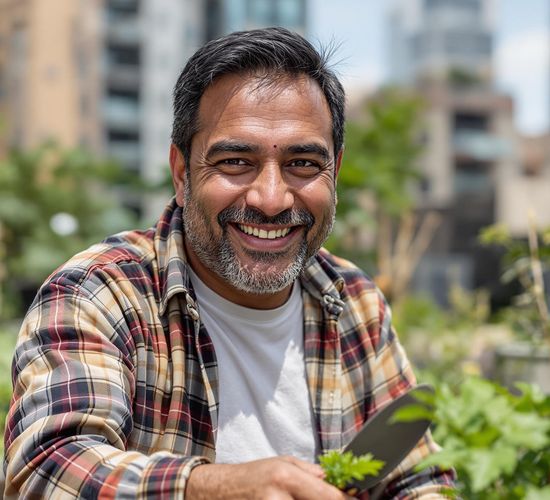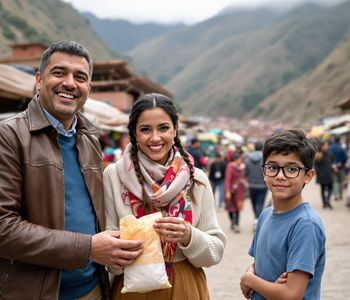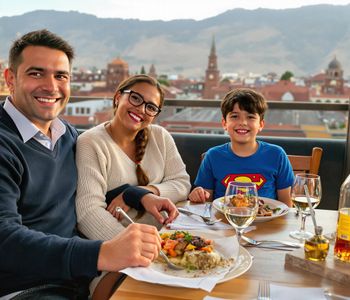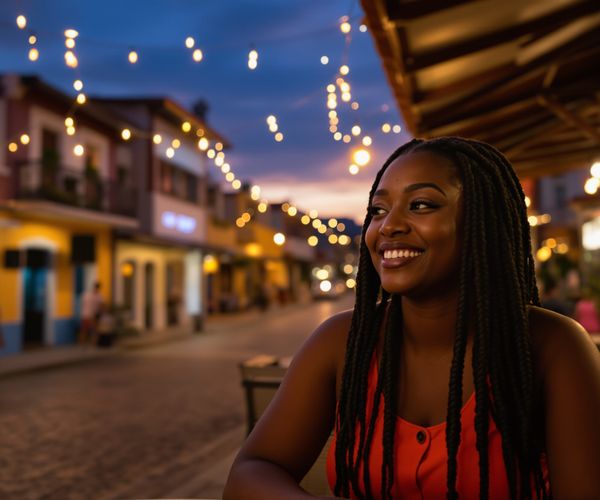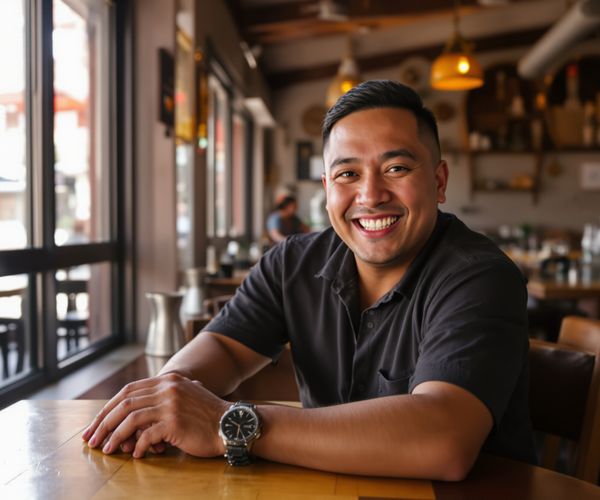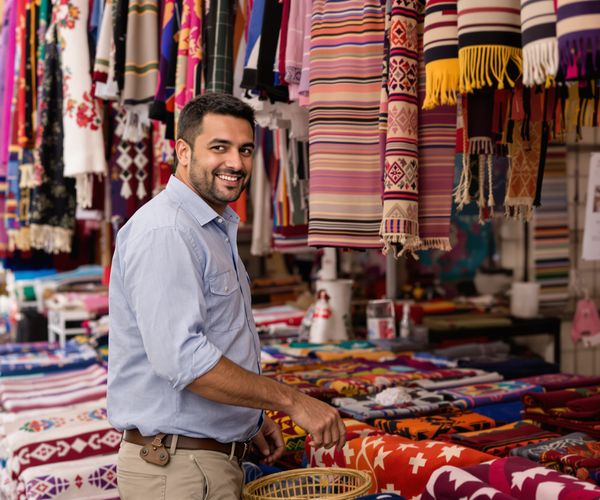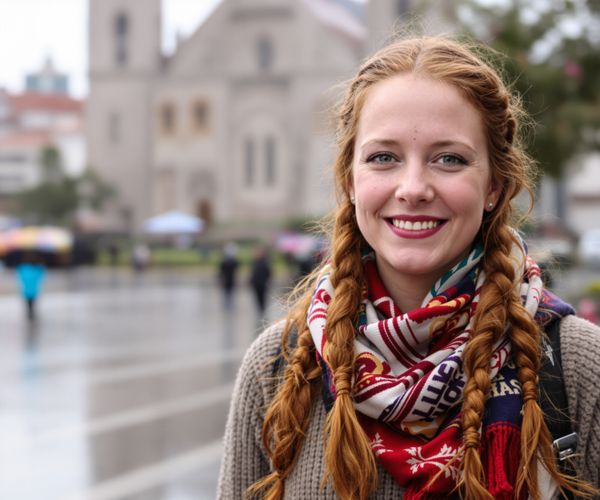Family Journey to the Heart of Incan Civilization in Cusco
Day 14: Unearthing Ancient Secrets: A Day Among the Incas' Ingenious Creations
Explore the Moray terraces, Maras salt mines, and Chinchero's weaving traditions in Cusco. A journey through Incan ingenuity and culture.
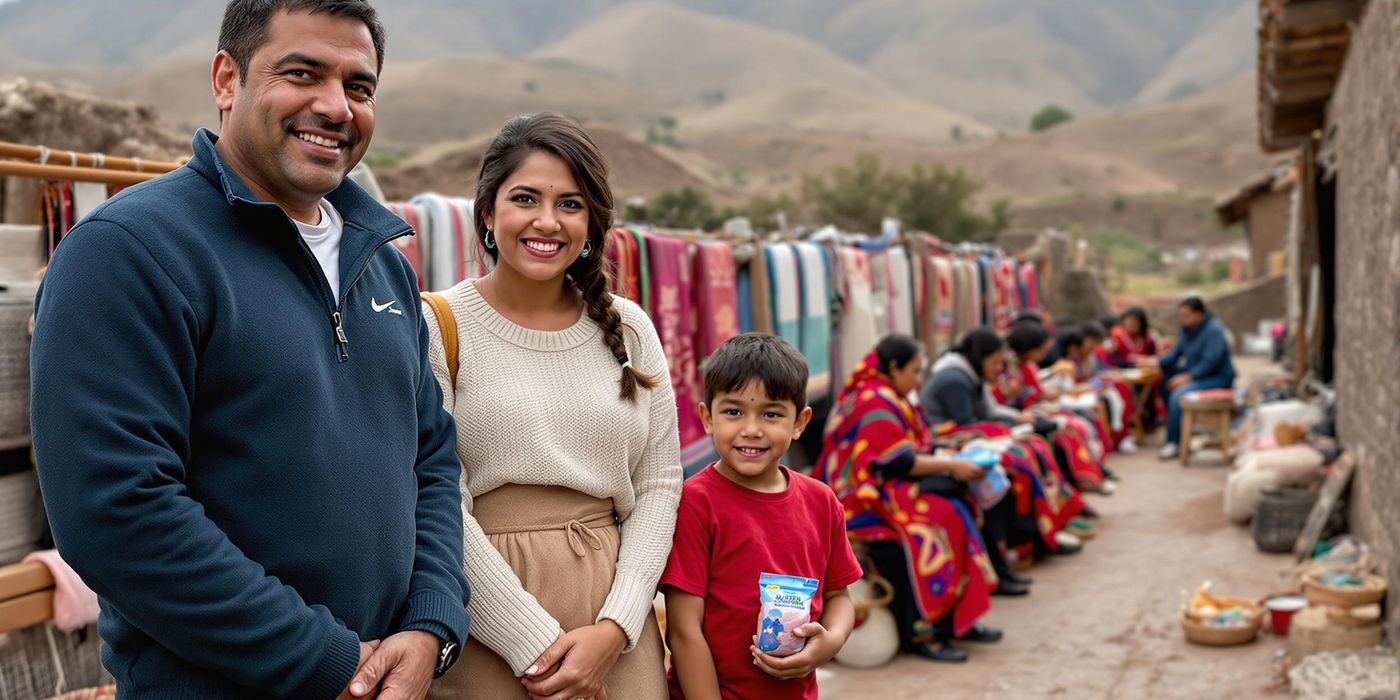
Whispers of the Past in the Sacred Valley
Today was a day of exploration that felt like stepping back in time, connecting with the ingenuity and resourcefulness of the Incas. Leaving the familiar streets of Cusco behind, my family and I ventured into the Sacred Valley, ready to uncover some of its most fascinating historical sites. It was a journey filled with breathtaking landscapes and profound insights into a civilization that continues to inspire awe and wonder.
Our day began with a hearty breakfast at Mama Seledonia. It was a delightful start, fueling us up for the day’s adventures. The restaurant was cozy, and I could feel the warmth that Seledonia, the owner and chef, puts into her dishes. It reminded me of my own family's cooking back in Huancavelica—simple, honest, and full of flavor. I savored every bite, knowing that we had a long day ahead of us.
Our first stop was Moray, an archaeological site that always sparks my curiosity. As a restoration technician, I’m naturally drawn to structures that speak of the past, and Moray certainly does that. The site consists of a series of circular terraces that descend into the earth, creating a mesmerizing landscape.

Explore Moray's ancient terraces, an archaeological marvel in the Sacred Valley, showcasing Incan agricultural ingenuity and breathtaking Andean views.
The most widely accepted theory is that Moray served as an agricultural research center for the Incas. The varying microclimates created by the different terrace levels allowed them to experiment with crop cultivation, adapting plants to thrive in diverse conditions. It’s a testament to their advanced knowledge of agriculture and their ability to innovate in harmony with nature. Mateo was particularly fascinated by the idea of the Incas creating different climates to grow their food. Sophie, ever the librarian, was engrossed in reading about the various theories surrounding Moray's purpose. I couldn't help but imagine the Incas meticulously studying the effects of altitude, temperature, and sun exposure on their crops, using this knowledge to feed their people.
There's also the theory that Moray was once an open-pit mine, later repurposed for farming and ceremonial uses. Regardless, standing there, surrounded by the concentric terraces, I felt a deep connection to the past, a sense of wonder at the Incas' ability to transform the landscape into something both functional and beautiful. It reminded me of the importance of preserving historical sites, of ensuring that future generations can learn from the wisdom of those who came before us. It’s incredible to think that the Incas may have cultivated thousands of potato varieties here, contributing to Peru's rich agricultural heritage.
The ingenuity of the Incas is not just in their ability to build magnificent structures, but in their understanding of the natural world and their capacity to live in harmony with it.
After Moray, we made our way to the Salt Mines of Maras, a site that presents a stark contrast to the agricultural terraces but is equally impressive. The salt mines are a collection of thousands of individual salt evaporation ponds, carved into the side of a mountain. These ponds have been in use since pre-Inca times, with families passing down their ownership and management from generation to generation.

Explore the ancient Salt Mine of Maras in Peru's Sacred Valley, a stunning landscape of salt ponds steeped in history and tradition.
As we walked along the narrow paths between the ponds, I was struck by the sheer scale of the operation. The glistening white salt, set against the backdrop of the rugged mountains, created a surreal and captivating scene. The process of salt extraction is simple yet ingenious: saltwater from a nearby spring is channeled into the ponds, where it evaporates under the sun, leaving behind crystallized salt. This salt is then harvested by hand, using techniques that have remained unchanged for centuries. The salt mines are believed to have been constructed between 500 to 1100 AD by the Wari civilization. When the Inca gained control of the territory, they began overseeing production.
It was fascinating to learn that the Maras salt is not only used for human consumption but also for livestock and even for mummification. The Incas valued salt as an essential mineral, and the salt mines played a vital role in their economy. I bought a small bag of the local pink salt to take back to Montreal, a reminder of this unique place and the ingenuity of the people who have worked these mines for centuries. I could imagine Sophie using it in her cooking, adding a touch of Peruvian flavor to our meals back home.
Our final stop of the day was Chinchero, a town known for its traditional weaving practices. As we approached Chinchero, I could see the town perched on a hillside, surrounded by stunning views of the Andes. Chinchero is considered one of the most traditional towns in the Sacred Valley. The town was developed as a personal residence by Inca Tupac Yupanqui, Pachacutec's son.

Discover the rich cultural heritage and breathtaking landscapes of Chinchero, an enchanting village in the heart of the Andes, Peru.
We visited a local weaving cooperative, where we learned about the intricate process of creating textiles using traditional methods. The women of Chinchero are renowned for their skill in weaving, a craft that has been passed down through generations. They use natural dyes derived from plants, insects, and minerals to create vibrant colors, and their patterns are rich in symbolism, reflecting their culture and beliefs. Sophie was particularly interested in the weaving process, admiring the intricate designs and the skill of the weavers. Mateo, on the other hand, was fascinated by the natural dyes, especially the cochineal, an insect that produces a deep red pigment. He couldn't believe that something so small could create such a vibrant color.
As I watched the women at their looms, I was struck by their dedication and passion for their craft. Weaving is more than just a way to earn a living; it’s a way to preserve their cultural identity, to keep their traditions alive. I purchased a beautiful woven blanket, a testament to their skill and artistry. It will be a cherished reminder of our time in Chinchero, a symbol of the enduring spirit of the Andean people. I learned that Chinchero is known as the birthplace of the rainbow. The secrets of ages-old techniques have been passed down from mother to daughter for generations since pre-Inca times. The Incas valued these textiles as a symbol of wealth and status. The town also preserves a traditionally religious spirit that reveals the syncretism of the Catholicism of the Spanish and the worldview of the Andean man.
Before heading back to Cusco, we enjoyed a delicious dinner at PER.UK, a restaurant that offers a fusion of Peruvian and British cuisine. It was a fitting end to a day of cultural immersion, a chance to reflect on everything we had seen and learned. The food was excellent, and the atmosphere was warm and inviting. I especially appreciated the restaurant's commitment to using local ingredients, supporting the community and showcasing the flavors of Peru.
As we drove back to Cusco, I couldn't help but feel a sense of gratitude for the opportunity to experience these incredible sites with my family. It was a day that deepened my connection to my Peruvian roots, a reminder of the rich history and culture that I carry within me. I shared stories of my childhood in Huancavelica, of growing up surrounded by the beauty of the Andes and the warmth of my family. Mateo listened intently, his eyes wide with wonder. Sophie held my hand, her presence a comforting reminder of the life we have built together in Montreal.
Tomorrow marks the end of our journey in Cusco. We plan to visit the Cusco Historical Center and the Monumento Inca Pachacutec. We'll have breakfast at Fuego, Burgers and Barbecue Restaurant, lunch at A Mi Manera, and a farewell dinner at LIMBUS RESTOBAR. We also plan to do some last-minute souvenir shopping at Real Plaza Cusco. It will be a bittersweet day, a time to say goodbye to this magical city and to carry its memories with us as we return to our lives in Canada.
Before heading to the hotel, I decided to have one last drink at Sassy Bar & Lounge. Sipping on a local beer, I thought about the incredible day we had and the journey that still lay ahead. The music was lively, and the atmosphere was relaxed. It was the perfect way to unwind and reflect on the wonders of the Sacred Valley. As I looked around, I saw people from all over the world, drawn to Cusco by its rich history and vibrant culture. I felt a sense of connection to them, a shared appreciation for the beauty and mystery of this ancient land. I knew that I would carry these memories with me always, a reminder of the power of travel to open our minds and hearts to the world around us.
Today was more than just a day of sightseeing; it was a journey of discovery, a chance to connect with the past and to appreciate the ingenuity and resilience of the Inca civilization. As I drifted off to sleep, I dreamt of circular terraces, glistening salt ponds, and vibrant woven blankets, all testaments to the enduring spirit of the Andes.
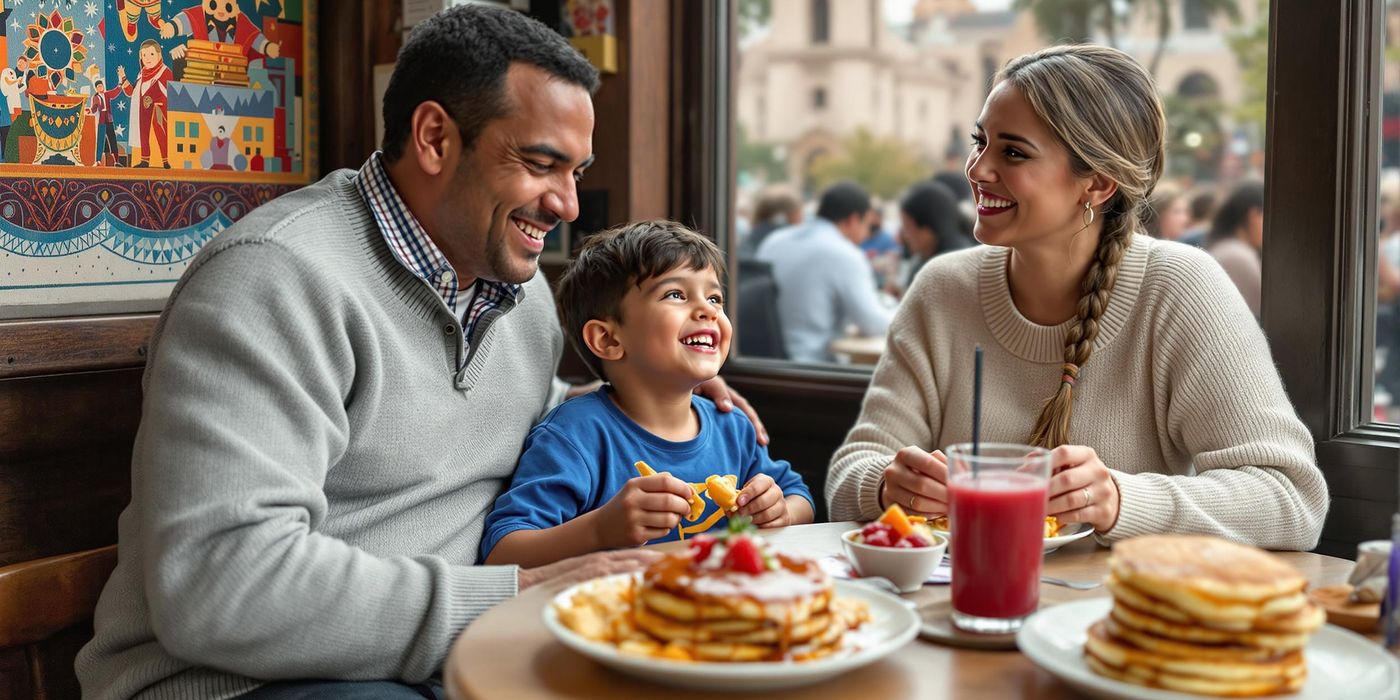
Explore Cusco's rich Incan heritage and vibrant culture with family, enjoying comfort and convenience at Jose Antonio Cusco Hotel.
Meet this Featured Explorer
-
Occupation: Restoration Technician specializing in historical buildings
-
Country: Canada
-
Age: 42
¡Hola, amigos! I'm Juan Quispe, a Peruvian-born restoration technician living in Montreal. My journey has taken me from the Andean highlands of Huancavelica to the vibrant streets of Montreal, and along the way, I've developed a deep appreciation for history, culture, and craftsmanship. Through this blog, I share my passion for travel, exploring historical sites, savoring South American cuisine, and preserving cultural heritage. Join me as I recount my adventures with my wife, Sophie, and our son, Mateo, as we explore the world, one historical site and delicious meal at a time.
- History
- Architecture
- Cultural preservation
- South American cuisine
- Hiking
Find Similar Travel Diaries
Explore locations from this diary
-
Jose Antonio Cusco Hotel
Discover comfort and convenience at Jose Antonio Cusco Hotel, your perfect base for exploring the beauty of Cuzco, Peru, with top-notch amenities.
-
Moray
Explore Moray's ancient terraces, an archaeological marvel in the Sacred Valley, showcasing Incan agricultural ingenuity and breathtaking Andean views.
-
Salt Mine of Maras
Explore the ancient Salt Mine of Maras in Peru's Sacred Valley, a stunning landscape of salt ponds steeped in history and tradition.
-
Chinchero
Discover the rich cultural heritage and breathtaking landscapes of Chinchero, an enchanting village in the heart of the Andes, Peru.
-
Mama Seledonia
Discover authentic Peruvian flavors at Mama Seledonia, a beloved restaurant in the heart of Cusco's historic district.
-
LOCAL Restaurante
Discover LOCAL Restaurante in Cusco: A Brunch Haven and Espresso Bar Offering Authentic Peruvian Flavors in a Cozy Setting.
-
PER.UK
Experience authentic Peruvian cuisine with gluten-free options at PER.UK in Cusco's historic center.
-
Sassy Bar & Lounge
Discover the vibrant flavors of Peru at Sassy Bar & Lounge, where grilled delicacies and an inviting atmosphere await in the heart of Cusco.

